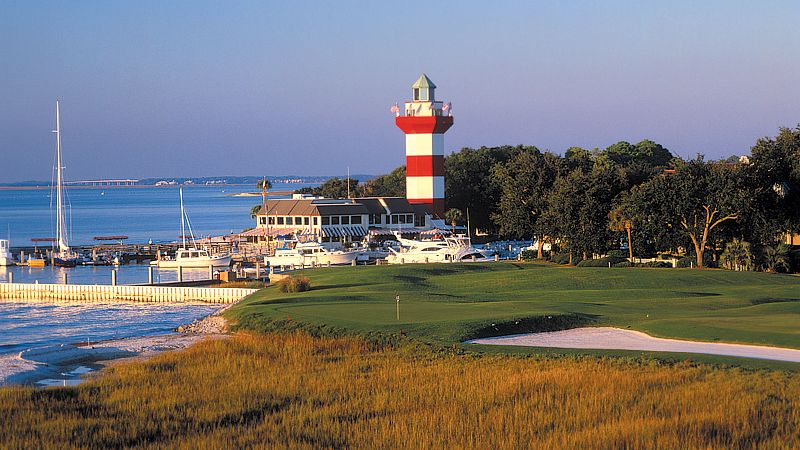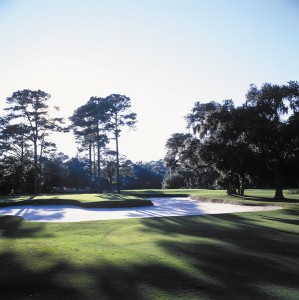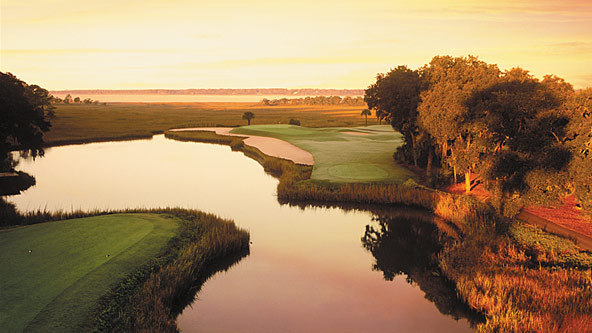Harbour Town (part of the Sea Pines Resort) is one of the few good golf courses I know of where you can find your drive in the fairway and still not have a clear shot to the green. That doesn’t sound like a lot of fun but it’s definitely integral to the challenge and originality of this course because it works hand-in-glove with the shape and size of the greens (tiny) and positions of the fairway bunkers.
Golf here must be entirely calculated: the angles, hazards and flexibility of Harbour Town form an equation that must be worked backward from the green to the tee, and this algebra helps the course continue to stand athwart to the power game that golf has become.
An unfortunate downside, however, is the influence it’s had over other courses in the region. This was one of the original Lowcountry courses built, and because it’s so good it gave license to claustrophobic fairways overhung with live oak.
The look became the regional imprint even though almost no other courses around here have the strategic DNA to accompany it. I don’t know what else could be done with all the dense native tree cover other than to just clear it and widen everything out, but there’s never been much of an effort in this part of the South to escape the narrowness.
That’s not Harbour Town’s fault. The entire concept of the course (not to mention iconic individual holes like the par-4 13th with it’s skull-shaped green perched above sleepers and a spacious apron bunker) was a game changer and a rejection of the big, modern Robert Trent Jones productions he and the cadre of architects imitating him had been building.
We all know about the last three holes (16 and 18 are overrated, in my mind) but other corners of the course continue to surprise me. In addition to the all-American 13th, the 9th—a ridiculously slender 332-yard hole to a minuscule V-shaped green with bunkers tucked in the apse—defies convention to this day. The par-5 15th doesn’t seem like much until you get close to the green and have to deal with its unorthodox contour first on the approach (elevated front right, falling away) and again with your putts. The par-3’s comprise one of the great collections in the Southeast and, personally, the 6th has always mystified me due to the small, angled putting surface, especially when the pin is back. (93)
Hilton Head
Architect: Pete Dye, with Jack Nicklaus
Year: 1969



